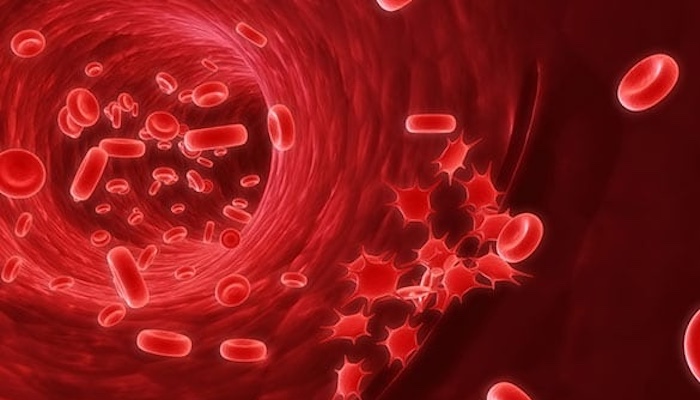
Abstract
Musculoskeletal pain is the most common pain reported by patients. Platelet-rich plasma (PRP) is widely used to treat musculoskeletal pain. However, the efficacy of PRP to treat this pain remains controversial. This review highlights the application of PRP in the treatment of musculoskeletal pain. PRP treatment appears to reduce pain and improve function in patients with musculoskeletal pain. However, there are limitations to the currently published studies. These limitations include the PRP preparation methods, type of activators, types of pathology to be treated, methods and times of administration, and association of PRP with other treatments.
Introduction
Among clinically associated pain conditions, musculoskeletal (MSK) pain is the most frequent. MSK diseases are the most common cause of severe long-term pain and physical disability and have a major impact on the quality of life of patients. MSK pain affects hundreds of millions of people around the world.
The primary goal of physiatrists is to optimize the pain management of their patients with various MSK conditions, including acute and chronic muscle, tendon, ligament, and cartilage disorders. The traditional management of MSK pain involves control with conservative “Rest, Ice, Compression, Elevation” treatment and physical therapy to corticosteroid injections coupled with specific rehabilitation exercises.
Although the traditional management of MSK pain may be helpful for short-term pain reduction and early recovery of function, it does not typically reverse the structural changes associated with degenerative conditions. Recently, the multidisciplinary field of tissue engineering has been expanding to enhance healing and stimulate growth in injuries of soft tissue and bone.
Platelet-rich plasma (PRP) is one research area that has developed rapidly in recent years. Historically, hematologists coined the term PRP in the 1970s, and platelets have been used to treat patients with bleeding or thrombocytopenia. The clinical use of PRP as a cell and tissue engineering therapy has dramatically increased over the last decade.
PRP is a biological product defined as the plasma fraction of autologous blood with a platelet concentration above baseline after centrifugation. PRP contains many biologically active factors such as platelet-derived growth factor, transforming growth factor-beta (TGF-β), insulin-like growth factor, vascular endothelial growth factor, and epidermal growth factor. PRP concentrates can promote the supraphysiological release of growth factors to enhance healing in chronic injuries, accelerate acute injury repair, and reduce MSK pain.
Platelet-rich plasma
PRP is the plasma fraction of autologous blood with a platelet concentration above baseline after centrifugation. Platelets are irregularly shaped, non-nucleated cytoplasmic bodies derived from the fragmentation of megakaryocyte precursors. Platelets are important in blood clot formation, thrombosis and hemostasis, immunity, inflammation, wound healing, hematological malignancies, and metabolic disorders.
PRP contains growth factors that promote cellular anabolism and enhance the release of inflammatory mediators and modulators that exert anti-inflammatory and analgesic effects. PRP counteracts the inflammatory cascade. PRP treatment has been shown to induce the release of hepatocyte growth factor (HGF), a major anti-inflammatory factor. Growth factors (HGF, interleukin-4, and tumor necrosis factor-alpha [TNF-α]) reduce the levels of cyclooxygenase (COX)-1, COX-2, and prostaglandin E2, which are proinflammatory mediators. Additionally, PRP can suppress the production of nuclear factor kappa-light-chain-enhancer of activated B cells, which is highly relevant in soft tissue inflammation.
PRP promotes tissue regeneration and has gained popularity in recent decades. PRP can induce the production of collagen and growth factors and might increase stem cell numbers, which consequently promotes the healing process by delivering high concentrations of alpha-granules containing biologically active moieties (such as vascular endothelial growth factor and TGF-β) to areas of soft tissue damage. PRP also stimulates cell proliferation and cartilaginous matrix production by chondrocytes and adult mesenchymal stem cells (MSCs). Findings from current clinical trials suggest that PRP has the potential to enhance cartilage repair, attenuate arthritis symptoms, and improve joint function with an acceptable safety profile.
Composition of platelet-rich plasma
PRP is the plasma from autologous blood after centrifugation and contains a rich concentration of platelets and a variety of growth factors, cytokines, chemokines, and proteins. The composition of growth factors promotes tissue repair and regeneration, enhances angiogenesis, and plays a vital role in anti-inflammatory and analgesic effects.
Precision Pain Care and Rehabilitation has two convenient locations in Richmond Hill – Queens, and New Hyde Park – Long Island. Call the Queens office at (718) 215-1888 or (516) 419-4480 for the Long Island office to arrange an appointment with our Interventional Pain Management Specialists, Dr. Jeffrey Chacko or Dr. Sonny Ahluwalia.















